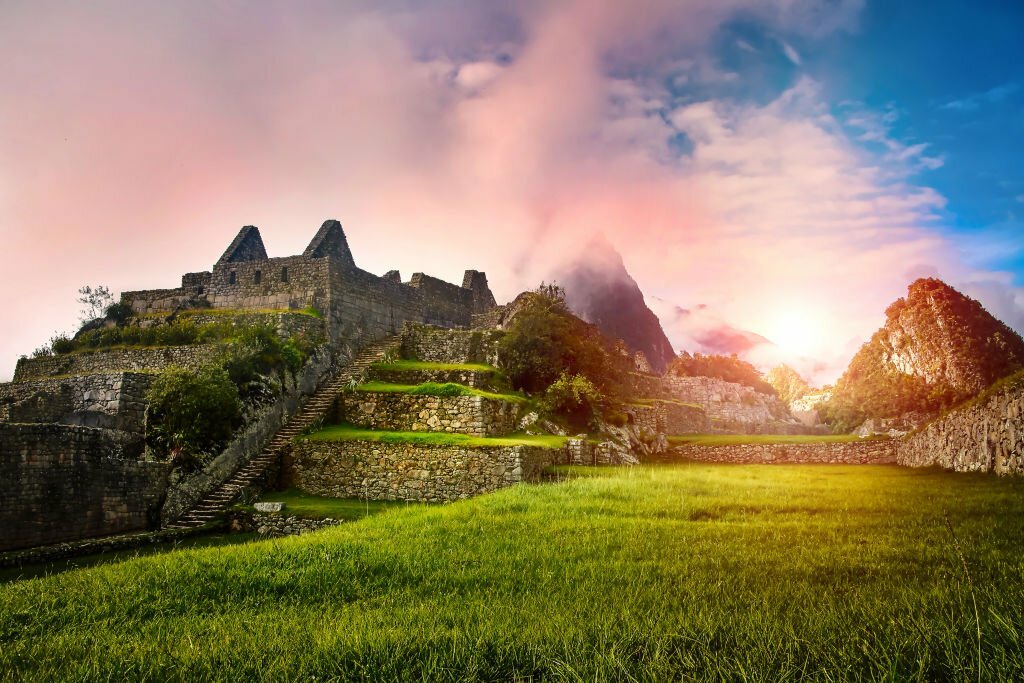Perched high in the Andes Mountains, amidst the breathtaking landscapes of Peru, lies the crown jewel of ancient Inca civilization—Machu Picchu. Revered as one of the New Seven Wonders of the World, this archaeological marvel continues to captivate the hearts and minds of travelers, historians, and adventure seekers alike. From its mysterious origins to its cultural significance and awe-inspiring architecture, Machu Picchu stands as an enduring testament to human ingenuity and the enigmatic allure of ancient civilizations.
1. A Citadel in the Clouds:
Machu Picchu, often referred to as the “Lost City of the Incas,” is situated at an altitude of approximately 2,430 meters (7,970 feet) above sea level. Its location amidst the mist-shrouded peaks of the Andes adds an ethereal quality to this archaeological wonder, creating an aura of mystery and grandeur that has captured the imaginations of explorers and scholars for centuries.
2. Inca Engineering Mastery:
The sheer brilliance of Inca engineering is showcased in every stone of Machu Picchu. The site features meticulously crafted terraces, temples, plazas, and residential areas, all constructed with a precision that continues to baffle modern architects. The seamless integration of the citadel with the natural contours of the mountain landscape is a testament to the Inca’s deep understanding of their environment.
3. Spiritual Significance:
While the exact purpose of Machu Picchu remains a subject of scholarly debate, many believe it served as a sacred site for religious ceremonies and astronomical observations. The Intihuatana stone, often referred to as the “Hitching Post of the Sun,” is thought to have played a role in Inca astronomical rituals, aligning with the sun’s position during solstices.
4. Discovery and Rediscovery:
Machu Picchu remained largely unknown to the outside world until its rediscovery by American historian and explorer Hiram Bingham in 1911. Covered by lush vegetation, the site had been hidden from the Spanish conquistadors and preserved in remarkable condition. Bingham’s expedition brought international attention to Machu Picchu, leading to its recognition as a UNESCO World Heritage Site in 1983.
5. UNESCO World Heritage Site:
In recognition of its cultural and historical significance, Machu Picchu was designated as a UNESCO World Heritage Site, joining the prestigious list in 1983. The UNESCO designation emphasizes the importance of preserving and protecting this extraordinary site for future generations.
6. The Inca Trail: A Pilgrimage to Machu Picchu:
For those seeking a transformative journey, the Inca Trail offers a pilgrimage through stunning landscapes and ancient ruins, culminating in the breathtaking arrival at Machu Picchu. This multi-day trek is not only a physical challenge but also a spiritual and cultural experience, allowing hikers to follow in the footsteps of the ancient Incas.
7. Sustainable Tourism:
As Machu Picchu’s popularity has grown, so too has the importance of sustainable tourism practices. Efforts are in place to manage visitor numbers, protect the site from environmental degradation, and ensure that the cultural and natural heritage of Machu Picchu remains intact for future generations.
8. Iconic Views and Photographic Splendor:
The iconic views of Machu Picchu, with its terraced structures against a backdrop of towering peaks, have become emblematic of Peru’s rich cultural heritage. Photographers and travelers from around the world are drawn to capture the splendor of this archaeological wonder, creating images that resonate across cultures and continents.
9. Cultural Immersion in Peru:
A visit to Machu Picchu is often part of a broader exploration of Peru’s cultural and historical treasures. Travelers can immerse themselves in the vibrant markets of Cusco, explore other Inca ruins such as Ollantaytambo, and savor the diverse flavors of Peruvian cuisine, creating a holistic and enriching experience.
In conclusion, Machu Picchu stands as a symbol of the ingenuity, spirituality, and cultural richness of the Inca civilization. Recognized as one of the New Seven Wonders of the World, it continues to inspire wonder and reverence, inviting visitors to embark on a journey through time and connect with the ancient mysteries that unfold amidst the splendor of the Andes.
Book your ticket here.










Comment (0)